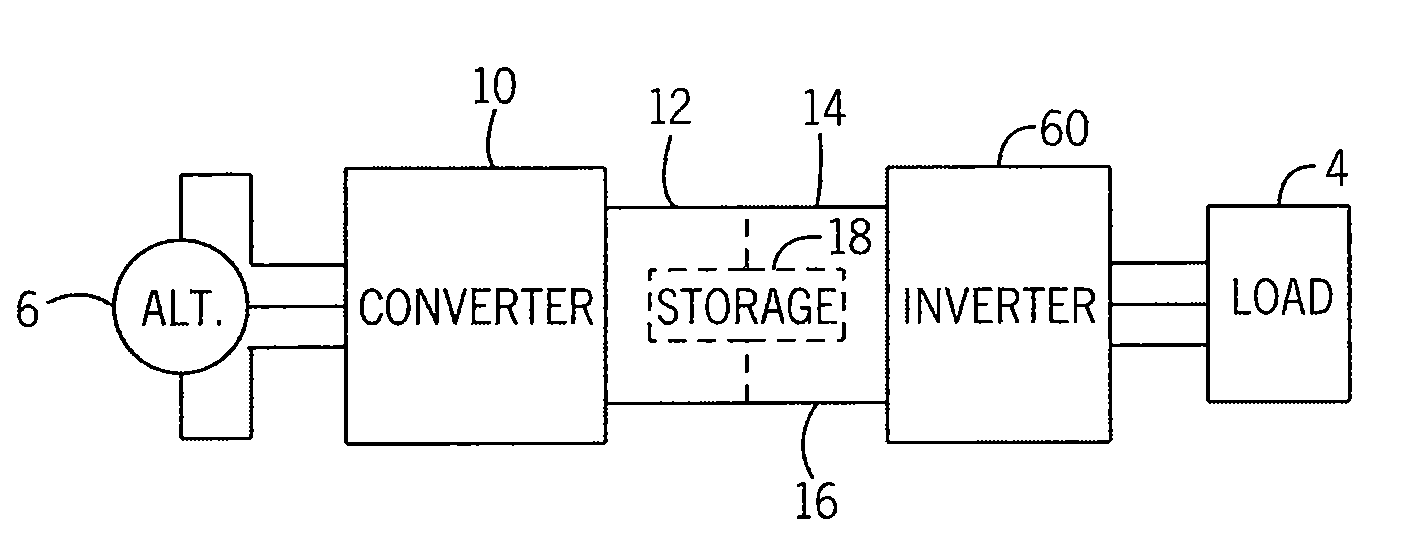System and method for low speed control of polyphase AC machine
a polyphase ac machine and low speed control technology, applied in the direction of electric generator control, instruments, therapy, etc., can solve the problems of high inefficiency, switching loss, and converters that are typically not operated, and achieve the effect of efficient operation and maximum efficiency of the power generation system
- Summary
- Abstract
- Description
- Claims
- Application Information
AI Technical Summary
Benefits of technology
Problems solved by technology
Method used
Image
Examples
Embodiment Construction
[0037]The various features and advantageous details of the subject matter disclosed herein are explained more fully with reference to the non-limiting embodiments described in detail in the following description.
[0038]Turning initially to FIG. 1, an exemplary converter 10 incorporating one embodiment of the present invention is illustrated. The converter 10 includes three input terminals, T1-T3, configured to receive input voltages. Each of the input terminals, T1-T3, of the illustrated embodiment is configured to receive one phase of a multi-phase voltage, V1-V3, generated by an alternator 6. The alternator 6 may generate, for example, three phase alternating current (AC) power. An input filter 28 is connected in series with each of the terminals, T1-T3.
[0039]The converter 10 receives the multiphase AC input voltage, V1-V3, at the terminals, T1-T3, and outputs a desired DC voltage, Vdc, present on a DC bus 12 using switching devices, 20 and 21. The DC bus 12 includes a positive rai...
PUM
 Login to View More
Login to View More Abstract
Description
Claims
Application Information
 Login to View More
Login to View More - R&D
- Intellectual Property
- Life Sciences
- Materials
- Tech Scout
- Unparalleled Data Quality
- Higher Quality Content
- 60% Fewer Hallucinations
Browse by: Latest US Patents, China's latest patents, Technical Efficacy Thesaurus, Application Domain, Technology Topic, Popular Technical Reports.
© 2025 PatSnap. All rights reserved.Legal|Privacy policy|Modern Slavery Act Transparency Statement|Sitemap|About US| Contact US: help@patsnap.com



